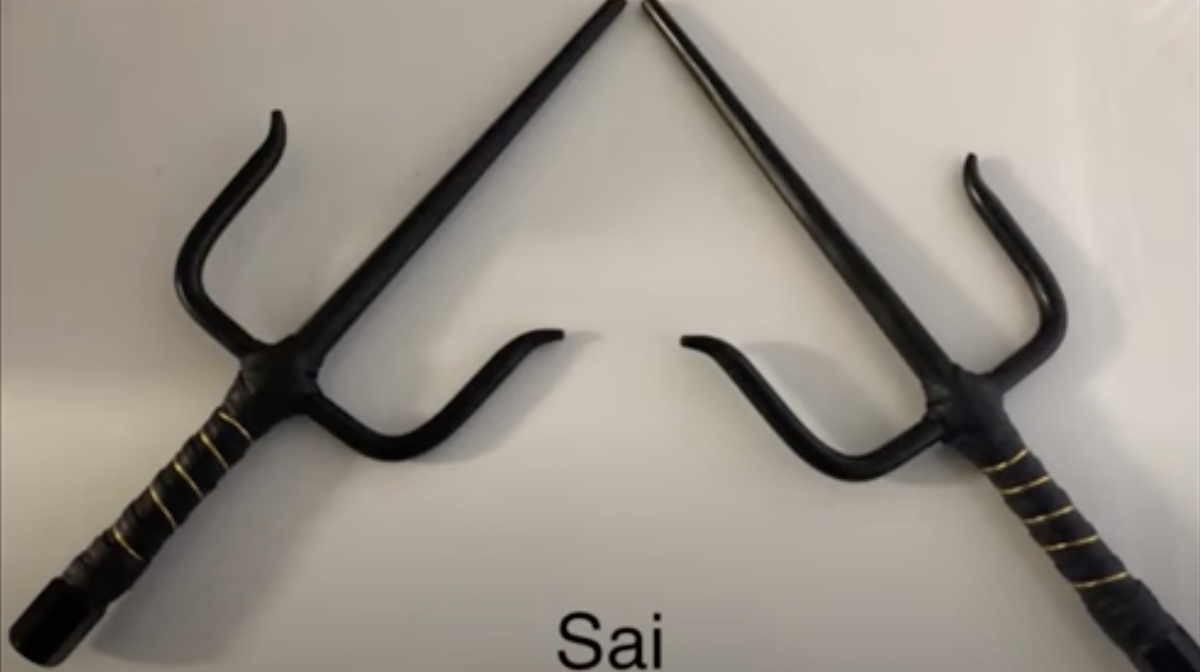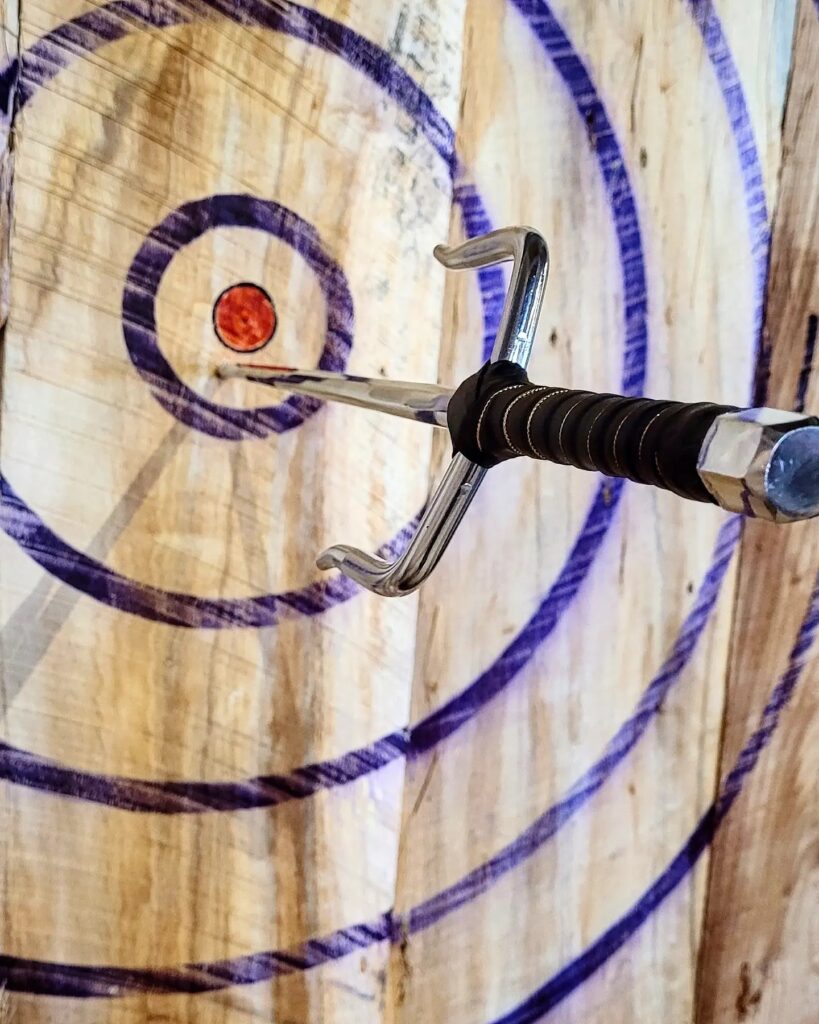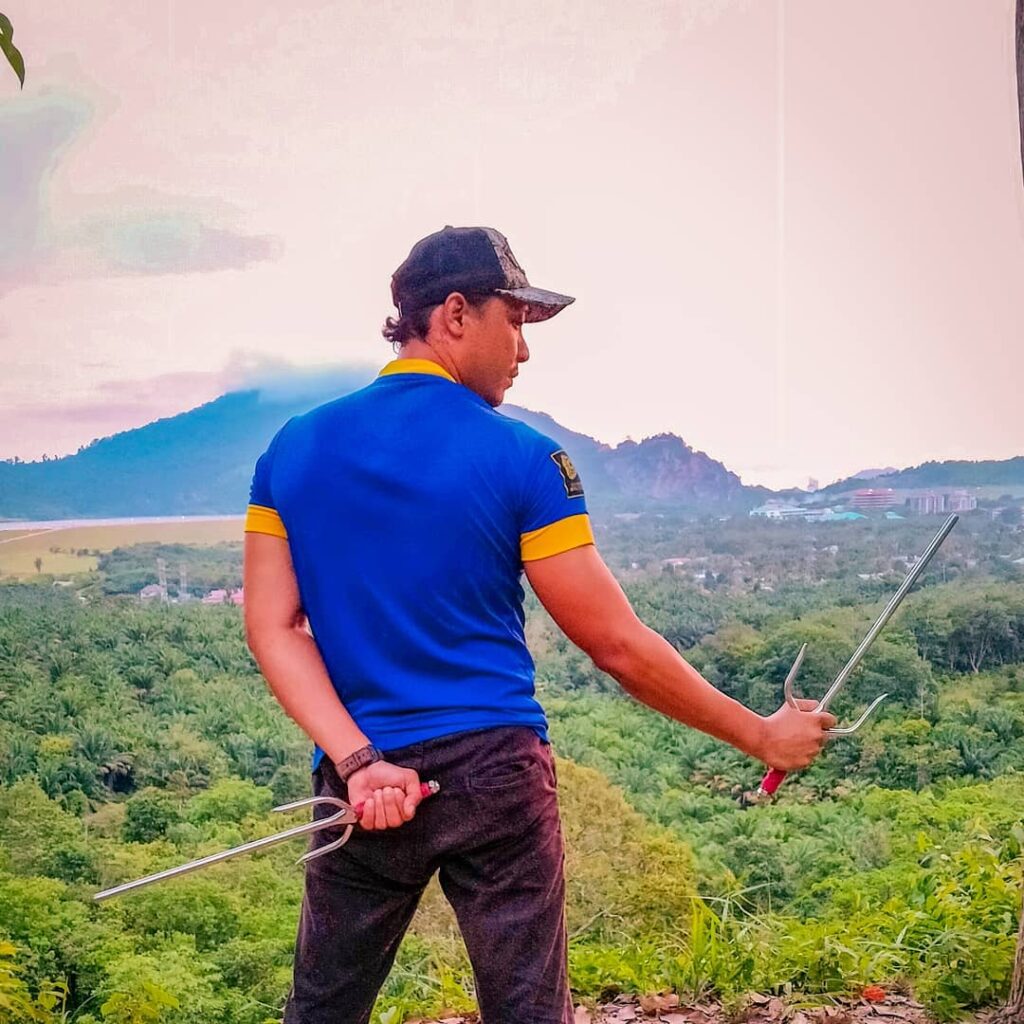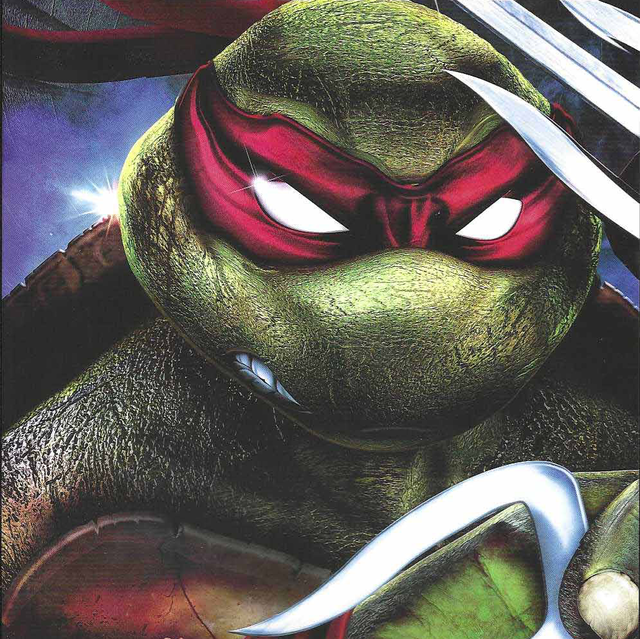Sai Weapon: A Traditional Okinawan Martial Arts Weapon

When we were kids, almost all of us pretended we were one of the Ninja Turtles. Many of us liked Raphael and had a plastic sai weapon that we swung around fighting off foot ninjas.
The martial arts weapon, the sai, has an interesting history we want to share. Going over how sais went from farm tools to weapons practiced by various Okinawan-based martial arts.
What is a Sai?
The sai is a traditional Okinawan weapon associated with Okinawan martial arts and ninjitsu. It is characterized by its distinctive fork shape, with a round, unsharpened prong in the middle.
On the sides, two sharp prongs stick out at right angles.
Each part of the weapon has a specific name in Japanese.
- Monouchi: The center prong that is either rounded or with a point.
- Yoku: The side prongs that function to trap an opponent’s weapon between them.
- Tsumes: The sharp tips of the side prongs.
- Moto: The Center that connects the three prongs.
- Tsuka: The sai handle.
- Saki: The sharp tip of the center prong.
They were predominantly used for thrusting attacks and defensive countering. The two prongs would be used for trapping and blocking.
Catching an enemy’s weapon and even doing techniques to disarm them. Once their enemy was unarmed, they could thrust the sais into their body.
Traditionally, the sai was made of wood, steel, or a mix of both. In modern times, manufacturers make plastic versions of sais that are built for practicing katas and forms.
There have been various styles of sai weapon developed throughout history. In Japan, the most popular style of sai was called “the jitte.”
The History of the Sai Weapon
The sai is a martial arts weapon that was originally a farm tool used for digging and removing weeds. It has been used in various Asian countries like Japan and China but most likely originated in China.
Most know the history of the sai weapon from how it was developed in Okinawa. When the Japanese seized control of the Okinawan Islands, they outlawed Okinawans from owning weapons.
This led Okinawan farmers to begin using farming tools to protect themselves against bandits and corrupt samurai. They would use everything from staffs, boat oars, sythes, and sais to defend themselves.
Many of these farmers were also practitioners of Okinawan martial arts, like Okinawan Kobudo. These weapons laws would also lead to the evolution of ninjas, who would use sais and other weapons on their missions.
The Japanese police force in the 1800s would even arm themselves with sais to defend themselves on patrol.
The sai weapon would be integrated into many other Okinawan-based martial arts as time passed. Later, the sai weapon would become immortalized through pop culture in numerous tv shows, movies, and video games. Most notably, Raphael from The Ninja Turtles.

Martial Arts That Use the Sai
Various Japanese martial arts would integrate the sai into their system. Here are some of the more notable martial arts that use the sai weapon in their curriculums.
- Okinawan Kobudo: As mentioned above, Okinawan Kobudo is the primary martial art that began using sais in their system. In Okinawan Kobudo, students learn extensive sai techniques along with bo staff, tonfas, and nunchakus.
- Karate: Many early Karate practitioners also practiced Okinawan Kobudo. They would integrate this weapon training into their Karate teachings to make them a more full self-defense system.
- Kung Fu: While Japan used the Sai, Kung Fu styles also incorporated the use of sais in their training. Quite possibly long before sais started being used in Japan.
- Ninjutsu: Then there’s the art of Ninjutsu which was developed during Japan’s occupation of Okinawa. Like Karate practitioners, many ninjas were also Okinawan Kobudo practitioners, who were experts at using weapons adapted from farm tools.
Sai Weapon Techniques
The sai is a diverse weapon with numerous offensive attacks but is mostly used for defensive counterattacks. They are generally used in pairs as they’re more compact than a sword and give users more protection than wielding one.
The techniques that are practiced with a sai include:
- Striking
- Blocking
- Parrying
- Disarming
- Joint Locks
Sais are used more as countering weapons. They block incoming attacks as they redirect them to counter or disarm an enemy.
The sai can even be used to lock on joint locks. As an enemy’s attack is blocked, you can use the sais to torque an opponent’s wrist.
More advanced sai practitioners would hide their attacks and defenses with flips and rotational movements.

Sai Training
Training to learn how to wield sais include intense drilling of basic movements. Practicing movements for hours as they learn to sit in their stance while maintaining balance properly.
As you progress and put time into training with the sais, your movements will become more fluid and crisp. Eventually, even do more complex movements, like implementing twirls and flips into your Sai weapon techniques.
The Sai in Popular Culture
The sai weapon has been popularized in various shows, movies, comics, and video games. Everything from the Nina Turtles, Mortal Kombat, Street Fighter, and Avatar: The Last Airbender.
Raphael (TMNT)
Raphael from the Teenage Mutant Ninja Turtles is the most known sai practitioner from any story or game. Raphael is the red bandana-wearing turtle that is known for his fighting spirit and use of the sais.
Raph is known for being the brothers’ most passionate and ill-tempered. Because of TMNT, the sai went through a rebirth in popularity. Each year, millions of kids buy toy sais to be like Raphael.

Mileena (Mortal Kombat)
Mileena is one of the longest-running characters from the hit video game Mortal Kombat series. She is known for wielding sais that she uses in different fatality attacks.
Elektra (Marvel Comics)
The Marvel Comics hero Elektra is another character known for her use of sais. She was most notable for being included in the 2002 Daredevil movie and the 2005 self-titles Elektra film. Actress Jennifer Garner portrayed the character in both movies.






